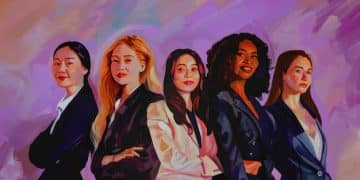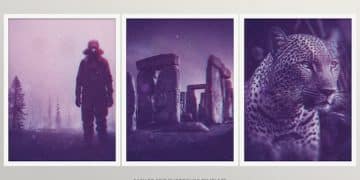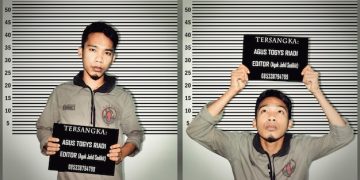K-Drama Archetypes in 2025: More Diverse or Still the Same?

Character Archetypes in K-Dramas: Are We Seeing More Diversity or the Same Old Tropes in 2025? explores if Korean dramas are evolving beyond traditional character roles or if they are still relying on familiar, predictable types in their narratives.
Are Character Archetypes in K-Dramas: Are We Seeing More Diversity or the Same Old Tropes in 2025? Are our favorite Korean dramas offering fresh perspectives, or are we caught in a loop of predictable characters?
The Enduring Appeal of K-Drama Archetypes
K-dramas have captivated audiences worldwide with their compelling storylines, stunning visuals, and, of course, their memorable characters. These characters often fall into well-defined archetypes, which contribute to the familiarity and comfort that many viewers seek. But is this reliance on archetypes holding K-dramas back from exploring new and exciting narrative territories?
Understanding the history and evolution of these archetypes is crucial to assessing whether K-dramas are truly diversifying their character portrayals. Let’s delve into the classic archetypes that have shaped the K-drama landscape.
The Classic Archetypes: Familiar Faces on Our Screens
From the stoic chaebol to the resilient “Candy” figure, certain archetypes have become synonymous with K-dramas. These characters often embody specific traits and fulfill particular roles within the narrative.
- The Cold Chaebol: The wealthy, aloof heir who initially appears emotionally unavailable but gradually softens as the story progresses.
- The Candy: The hardworking, optimistic, and often poor woman who faces adversity with unwavering determination and eventually wins the heart of the chaebol or another equally desirable character.
- The Second Lead: The kind, supportive, and often more relatable character who pines for the female lead but ultimately loses out to the main lead.
- The Evil Stepmother/Mother-in-Law: The scheming, manipulative, and often wealthy woman who opposes the main couple’s relationship.
The enduring popularity of these archetypes speaks to their ability to resonate with viewers on an emotional level. However, the question remains: are K-dramas becoming too reliant on these familiar tropes, and are they truly reflecting the changing realities of society?
In conclusion of this section, the appeal of classic K-drama archetypes lies in their predictability and emotional resonance, but their dominance raises questions about diversity and relevance in contemporary narratives.
The Push for Diversity: Reflecting Modern Society
As South Korean society evolves, there is a growing demand for K-dramas to reflect the diversity of experiences and perspectives within the country. This includes a desire for more representation of different ethnicities, sexual orientations, socio-economic backgrounds, and physical abilities.
The call for diversity extends beyond mere representation; it also encompasses a desire for more nuanced and complex character portrayals that challenge traditional stereotypes and offer fresh perspectives on social issues.
Breaking the Mold: K-Dramas That Challenge Archetypes
While classic archetypes still hold sway, there is a growing number of K-dramas that are actively pushing the boundaries and challenging traditional character roles. These dramas often feature characters with unconventional traits, complex motivations, and stories that deviate from the typical K-drama formula.
- Strong Female Leads: Characters who are independent, assertive, and proactive in their own lives, rather than passively waiting to be rescued.
- LGBTQ+ Representation: Although still relatively limited, there are increasing efforts to portray LGBTQ+ characters and relationships with sensitivity and authenticity.
- Characters with Disabilities: Dramas that feature characters with disabilities in meaningful roles, showcasing their strengths, challenges, and contributions to society.
These dramas demonstrate a willingness to explore new narrative territories and cater to a more diverse and discerning audience. But are these isolated examples, or do they represent a broader trend towards greater diversity in K-drama character portrayals?
In essence, the push for diversity in K-dramas reflects a desire to move beyond traditional archetypes and create more inclusive and representative narratives that resonate with a wider range of viewers.
Analyzing Recent K-Dramas: A Shift in Character Portrayals?
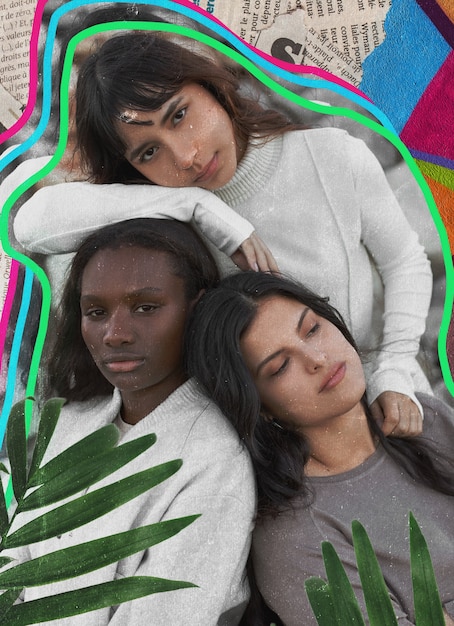
To gain a better understanding of the current state of K-drama character archetypes, it is essential to analyze recent productions and assess whether they exhibit a shift towards greater diversity or a continued reliance on familiar tropes.
This analysis should consider not only the main characters but also the supporting cast, as well as the overall narrative themes and messages of the dramas.
Case Studies: Examining Specific K-Dramas
Several recent K-dramas have garnered attention for their innovative character portrayals and willingness to challenge traditional archetypes. These dramas offer valuable case studies for understanding the evolving landscape of K-drama characters.
- “Itaewon Class”: A drama that features a diverse cast of characters from different backgrounds, including a transgender woman and a character with a criminal record.
- “Crash Landing on You”: A drama that subverts traditional gender roles by portraying a strong and independent female lead who is able to protect and support the male lead.
- “Move to Heaven”: A drama that centers on a young man with Asperger’s syndrome who works as a trauma cleaner, offering a sensitive and nuanced portrayal of disability.
These examples suggest a growing awareness of the need for more diverse and representative character portrayals in K-dramas. However, it is important to note that these dramas are not without their flaws, and they may still perpetuate certain stereotypes or fall short of fully realizing their potential for inclusivity.
In conclusion, analyzing recent K-dramas reveals a mixed bag, with some productions embracing diversity and challenging archetypes, while others continue to rely on more traditional and potentially limiting character portrayals.
The Role of Writers and Production Companies
The writers and production companies behind K-dramas play a crucial role in shaping the characters and narratives that are presented on screen. Their choices regarding casting, scripting, and directing can have a significant impact on the diversity and authenticity of character portrayals.
Understanding the perspectives and motivations of these key players is essential to understanding the forces that are driving (or hindering) the diversification of K-drama character archetypes.
Influences and Constraints: Balancing Creativity and Commercial Appeal
Writers and production companies often face a complex set of influences and constraints when creating K-dramas. They must balance their creative vision with the need to appeal to a broad audience and generate revenue.
These constraints can sometimes lead to a reliance on familiar archetypes and tropes, as these are seen as a safe bet for attracting viewers. However, there is also a growing recognition that taking risks and challenging conventions can lead to greater critical acclaim and long-term success.
Ultimately, the decisions made by writers and production companies will determine the future of K-drama character archetypes. Will they continue to prioritize commercial appeal over diversity and authenticity, or will they embrace the challenge of creating more inclusive and representative narratives?
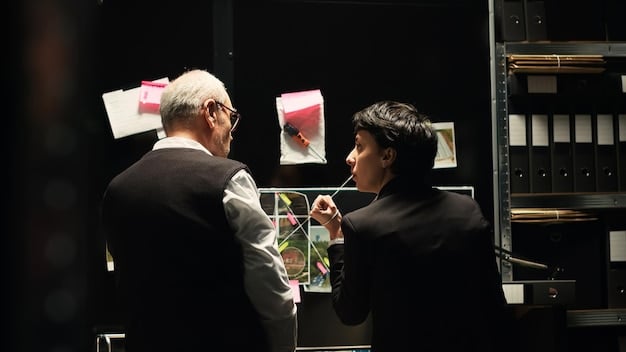
In summary, the role of writers and production companies is pivotal in the evolution of K-drama characters, as they navigate the delicate balance between creative expression and commercial considerations.
Audience Reception and the Impact of Global Viewership
The reception of K-dramas by both domestic and international audiences also plays a significant role in shaping the evolution of character archetypes. Audience feedback, both positive and negative, can influence the choices that writers and production companies make in future productions.
The growing popularity of K-dramas on global streaming platforms has expanded the potential audience and increased the pressure to create content that resonates with viewers from diverse cultural backgrounds.
#DiversityMatters: The Power of Social Media and Online Communities
Social media and online communities have become powerful platforms for K-drama fans to express their opinions and demand greater diversity and representation in the shows they watch. Hashtags like #DiversityMatters and #RepresentationMatters have gained traction, highlighting the growing demand for more inclusive and authentic character portrayals.
- Platforms like Twitter and Reddit allow fans to share their thoughts in real-time.
- Online forums create dedicated spaces for discussions about characters and storylines.
- Fan-made content, such as edits and videos, celebrates diverse characters.
This online activism can have a significant impact on the K-drama industry, as writers and production companies become more aware of the expectations and desires of their global audience.
In conclusion, audience reception, amplified by social media and online communities, plays a crucial role in shaping the evolution of K-drama characters by influencing the decisions of writers and production companies.
Looking Ahead to 2025: Predictions and Possibilities
As we look ahead to 2025, it is difficult to predict exactly what the future holds for K-drama character archetypes. However, based on current trends and developments, we can offer some educated guesses and explore the possibilities that lie ahead.
Will K-dramas continue to diversify their character portrayals and embrace more inclusive and representative narratives, or will they revert to more traditional and familiar tropes? The answer likely lies in the choices made by writers, production companies, and audiences alike.
The Future of K-Drama Characters: A More Inclusive Landscape?
One possibility is that K-dramas will continue to evolve and diversify, creating a more inclusive and representative landscape of character portrayals. This could involve:
- More nuanced and complex characters who defy easy categorization.
- Greater representation of marginalized communities and diverse experiences.
- Stories that challenge traditional stereotypes and promote social change.
Whether K-dramas fully embrace this potential remains to be seen. However, there is reason to be optimistic that the future holds a more diverse and inclusive landscape of K-drama character archetypes, and, it will lead to greater diversity, authenticity, and social impact.
| Key Point | Brief Description |
|---|---|
| 🎭 Classic Archetypes | Enduring figures like the cold chaebol and the Candy, providing familiarity. |
| ✨ Diversity Push | Growing demand for representation of various ethnicities, orientations, and abilities. |
| 🎬 Recent Trends | Some dramas are challenging norms with strong female leads and LGBTQ+ characters. |
| 📣 Audience Influence | Social media amplifies calls for diversity, impacting production choices. |
FAQ
▼
Common K-drama archetypes include the cold chaebol, the Candy (a resilient, optimistic woman), the second lead (a supportive but unrequited character), and the evil stepmother or mother-in-law, each driving familiar narrative patterns.
▼
Classic archetypes remain popular due to their predictability and emotional resonance. These familiar characters and storylines provide comfort and a sense of nostalgia for viewers, ensuring continued viewership in the K-drama landscape.
▼
K-dramas are striving for diversity by featuring strong female leads, incorporating LGBTQ+ representation, and including characters with disabilities. These efforts aim to reflect a more inclusive and accurate portrayal of modern society.
▼
Writers and production companies significantly influence character diversity by balancing creative vision with commercial appeal. Their decisions on casting, scripting, and directing determine the range and authenticity of characters portrayed in K-dramas.
▼
Audience feedback, especially through social media, shapes the evolution of K-drama characters. Positive or negative reception influences future decisions made by writers and production companies, encouraging more diversity and nuanced storytelling.
Conclusion
In conclusion, the landscape of Character Archetypes in K-Dramas: Are We Seeing More Diversity or the Same Old Tropes in 2025? is evolving. While classic archetypes still hold a place, there’s a noticeable push for more diverse and inclusive portrayals. The direction K-dramas take will depend on the combined efforts of writers, production companies, and the ever-vocal global audience.
